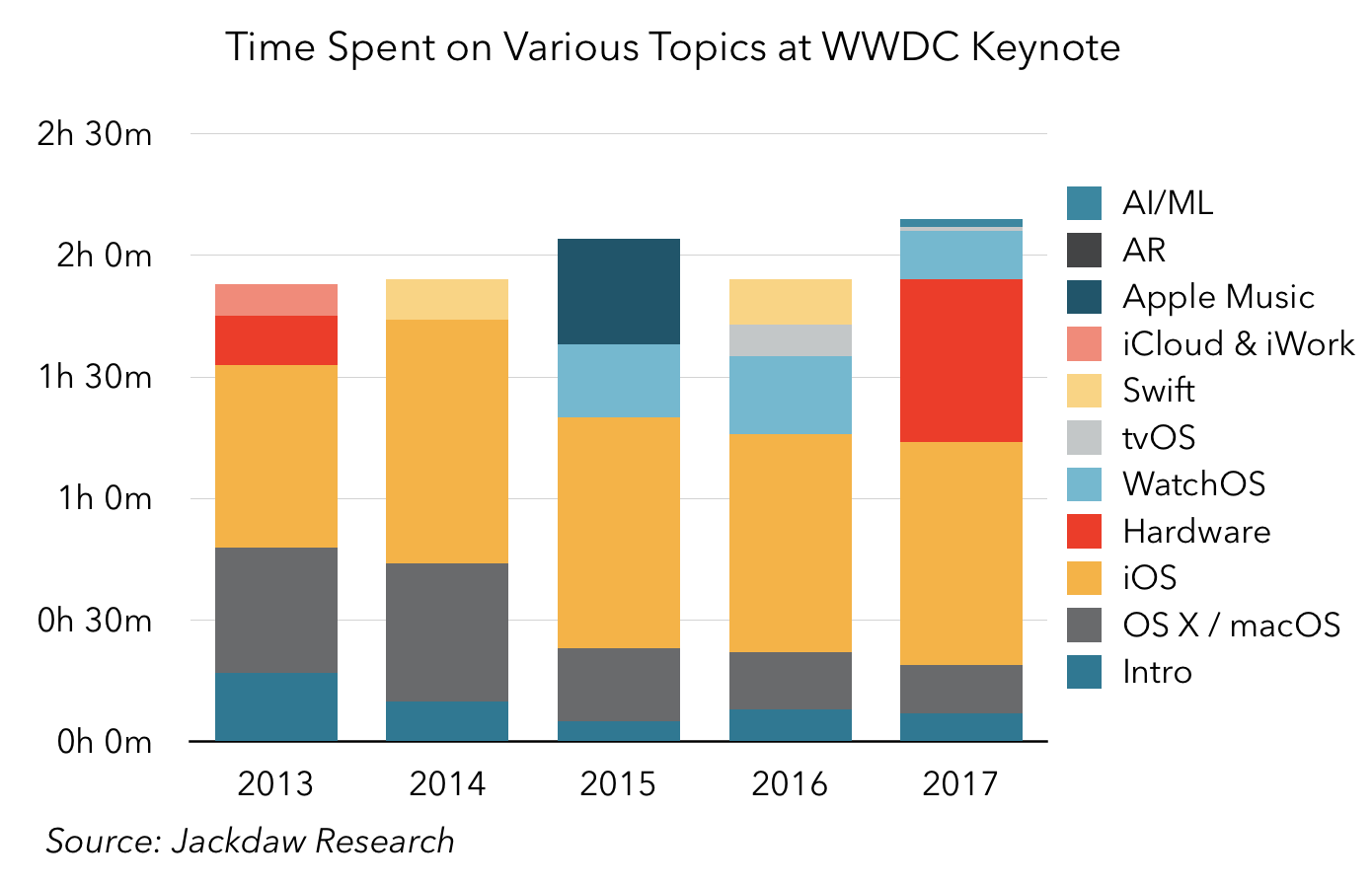Apple today kicked off its WWDC developer conference with a keynote outlining its major announcements. The comment below may be attributed to Jan Dawson, Chief Analyst, Jackdaw Research. Jan is also at the event in person and can be reached at jan@jackdawresearch.com or 408 744 6244.
Apple had its most hardware-centric WWDC keynote in many years, with upgrades to the Mac and iPad lines, and the announcement of the HomePod home speaker. That reflects both the need to placate the pro community around the Mac lineup, and the ongoing push to frame the iPad Pro as a tablet than can replace your laptop. Overall, the focus on professional users was a major theme throughout the iPad and Mac sections of the keynote. Between what’s available today and what’s coming later this year, Apple now has a much more polished and powerful lineup of Macs for creative professionals including those who work on heavy duty content like 3D renders and VR.
The product that will garner the most attention, though, is the HomePod, because it’s the first new product category from Apple in a couple of years, and an entry in a hot space. However, Apple is smart to frame the HomePod as a music-centric and audio-centric device rather than just another smart speaker or another home for Siri. Yes, it does those things too, but that’s not how Apple wants us to think about it. At $349, the HomePod is priced well above the pure smart speakers from Google and Amazon, but Apple doesn’t want to be compared against those – instead, it wants to be considered in the same category as Sonos, Bang & Olufsen, and other high-end audio. In that category, the $349 price point is actually really competitive. The fact that Apple is claiming to marry really great and smart audio with a smart assistant and cloud music service makes this device unique in the market so far. I would bet that Apple will sell a lot of these at Christmas and into next year.
Virtual and augmented reality were another big focus area for Apple this year, neither of which it’s really talked about at its events before, but its approach to those two areas is distinct in important ways. In VR, Apple is mostly enabling third party editing and creation of VR content for consumption on other platforms and to an extent on the Mac, whereas with AR Apple is focused on developers creating apps for the iPhone and iPad. So it’s embracing AR as an immediate first-party opportunity while keeping VR at arm’s length when it comes to mobile platforms, in contrast to Samsung and other smartphone vendors. Its ARkit tools for developers should quickly vault Apple into consideration as a major player in the current smartphone-centric AR market, where it’s now got arguably one of the biggest platforms in the world for developers to focus on. And because Apple isn’t seeing AR as just for filters or lenses on selfies, the opportunity on iOS is arguably much broader than on other platforms like Facebook, especially in the near term.
The chart below shows how Apple has spent its time during WWDC keynotes over the last few years:
